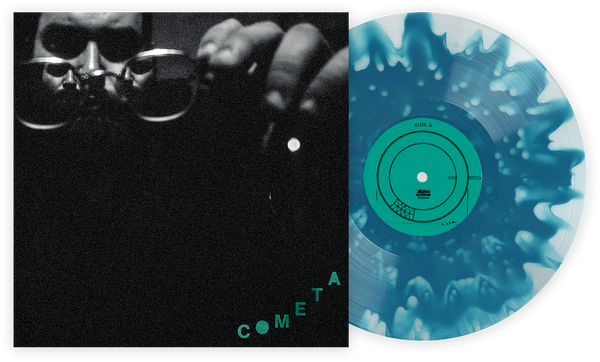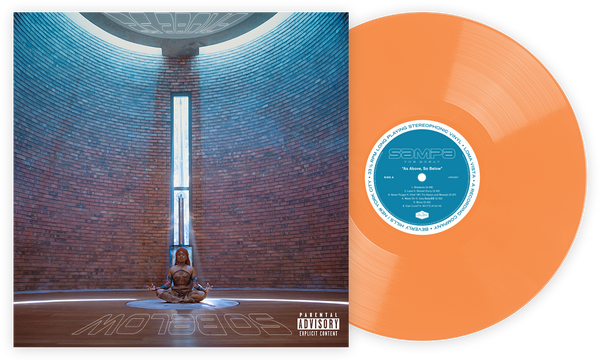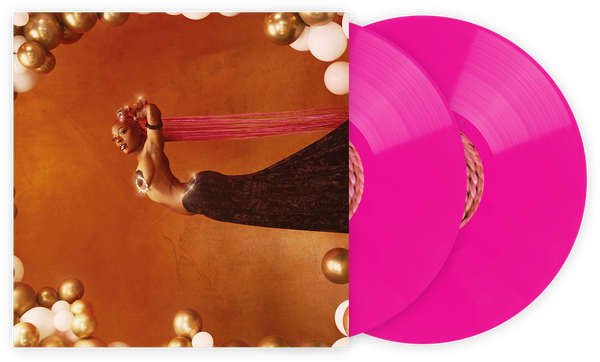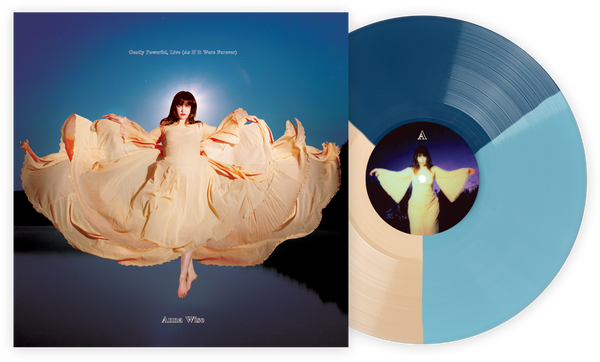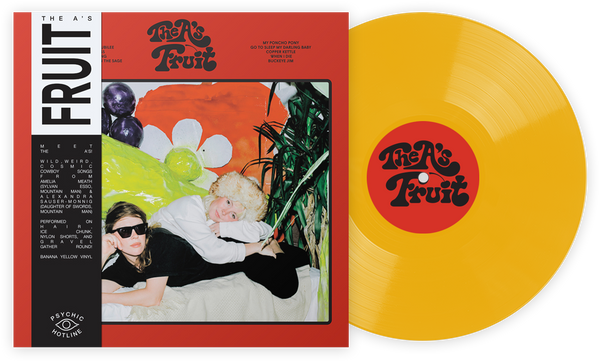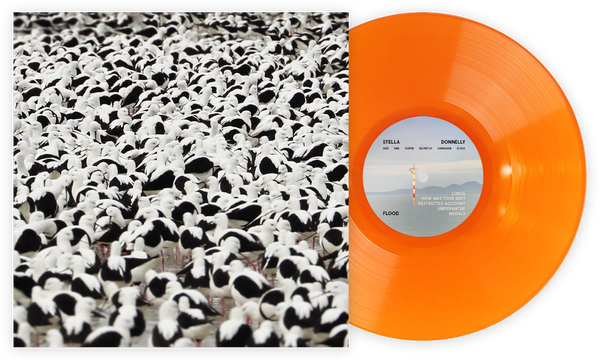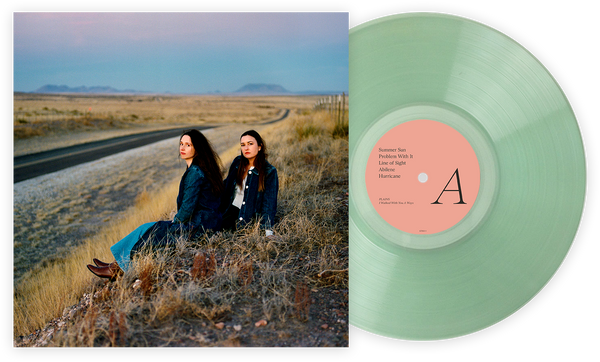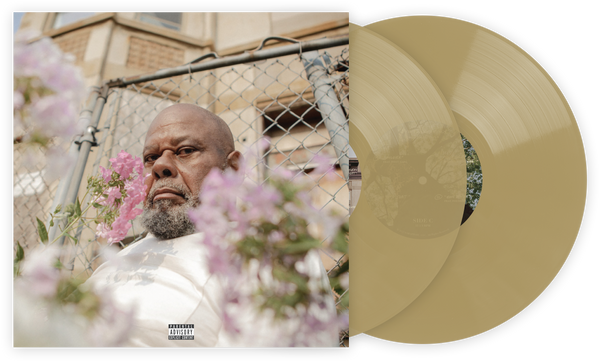Tom Waits is unlike any other working artist today. With equal parts vaudeville, blues, jazz, industrial, and experimental, Waits has made a body of work that spans nearly four decades and seventeen studio albums, with a slew of fantastic live albums to mention as well. He’s been covered by everyone from Bruce Springsteen and the Eagles to Rod Stewart, all the while maintaining his staunch personal mystique - part beat-poet-crooner, part bastardized Americana survivor, stalking the streets alongside the gin-soaked characters in his songs. So it’s no surprise that a walk through his catalogue is a journey certainly worth partaking in.
For the otherwise uninitiated, a foray into the immense discography of Tom Waits is a daunting task. Where does one begin? What period of his music is the best to listen to first, in order to best grasp the essence of the artist? Which of his seventeen albums contain the most interesting songs, but aren’t so far into the stratosphere of weirdness that they become tough to digest? After all, through his career Waits has made his way through a number of genres and styles, with guest musicians ranging from Les Claypool of Primus to Keith Richards to Carla Kihlstedt of Sleepytime Gorilla Museum.
Below are ten fantastic Tom Waits albums to get you started on his immense body of work.

Blue Valentine (1978)
Opening with a beautiful, sweeping rendition of “Somewhere” (from West Side Story fame), Blue Valentine finds Tom Waits at a bit of a middle point in his career; his past jazz and blues influences are clearly present in his songwriting, and yet the album sees a larger usage of electric guitar, with a wider range of sounds and arrangements than had ever been used on a Waits album. There are string-filled, heart-wrenching ballads such as “Kentucky Avenue” and the opening track; there are jazzy, bluesy songs such as “Christmas Card From A Hooker In Minneapolis” and the title track; and there are the smoke-filled, swagger-fueled numbers of “Romeo Is Bleeding,” “Whistlin’ Past The Graveyard,” and “Wrong Side of the Road.” This is an album that, finding Tom Waits on the verge of a musical transformation of sorts, has a little something for everyone, and is an excellent introduction to the sleazy places and seedy characters that would become paramount to Waits’ songwriting.

The Black Rider (1993)
If you want your Tom Waits vinyl with the strange factor cranked, then this is the record for you. Originally created as the soundtrack for the play of the same name (directed by Robert Wilson, with whom Waits would collaborate many more times in the future), The Black Rider is a front-seat pass into a fun-house from hell, a circus seen through the eyes of madness. There are, of course, moments of quiet throughout the show - the somber “November,” and the sweet, drunken “I’ll Shoot The Moon” - but this is Tom Waits at full-tilt-back-alley-salesman mode, his gravelly delivery creating its own delightfully vibrant character against the rattling instrumentals throughout. Such songs as “The Black Rider,” “Just The Right Bullets,” and “Carnival” benefit greatly from the vinyl release; with the medium’s audio quality, you can almost feel the crackling of energy as the strange and captivating noises emanate from your record player. It’s truly a unique experience, and one you should try at least once - you may find yourself wanting to come back for the ride.

Small Change (1976)
To serve as a direct contrast to the previous entry, Small Change is Tom Waits’ third studio album, back when he was fully entrenched in his jazz-fueled singer-songwriter aesthetic. Utilizing his piano and a set of strings sounds to maximum effect, the songs found on this album are much more personal; the album was recorded after a long period of touring and being on the road, during which time Waits had picked up his drinking habits significantly. As such, the lyrical content of Small Change is much more cynical, with Waits asserting about himself that “there ain’t nothing funny about a drunk.” However, despite the mood shift, the writing on the album is some of Waits’ best, including such classics as “Tom Traubert's Blues (Four Sheets to the Wind in Copenhagen),” “The Piano Has Been Drinking (Not Me)” and “Step Right Up.” One of Waits’ jazziest, bluesiest albums, Small Change cemented Waits as an important figure in the American songwriting world.

Frank’s Wild Years (1987)
Completing the trilogy of albums that began with Swordfishtrombones (more on that in a bit), Frank’s Wild Years is an oddball of an album, with walking bass lines, horn breaks, and moments that will make you do a double-take and question if that instrument you just heard is actually what you thought it was. Keyboard-like sounds morph into reverberated guitar, trash cans turn into drum sets, and Tom Waits’ voice, always the acrobat, displays an impressive amount of flair and variance, going from a thin sneer to a roaring growl in the span of a song. From the opening track, “Hang On Saint Christopher,” the album takes you on a journey that is familiar enough to be enticing, but strange enough for one to want to maintain attention. Like many records on this list, the joy of listening to Frank’s Wild Years on vinyl is the pop that comes with each new sound you hear, and the character that each one takes on as the record saunters along. Pump organ, glockenspiel, Mellotron - Waits finds a way to make them all work together to create a fantastic, inventive record.

Closing Time
Despite it being Tom Waits’ debut album, Closing Time remains a testament to Waits’ fantastic arrangements and unique, poetic songwriting - and this is in the days before he had his signature growl! Produced by the legendary Jerry Yester (formerly of the Lovin’ Spoonful), Closing Time is largely considered a jazz album - Yester’s production on the album helps to accentuate Waits’ early jazz background - but that doesn’t stop the occasional folk influence from sneaking into the mix. The opening crooner “Ol’ 55,” the only single to have been released from the album, would later be famously covered by The Eagles, who were labelmates with Waits at the time. The song remains one of Waits’ best; from the classic piano line to the subtle guitar lines and backing vocals that glisten throughout the track, the composition of the track is a good indicator of the care and attention that Waits gives to every song on the twelve-track album. That’s not to say, of course, that it’s the only high point of the album; on the contrary, Closing Time features some of Waits’ most classic songs, from “Martha” to “Virginia Avenue” to the “Rosie.” At the end of the day, however, it’s all about the little details on Closing Time that will keep you coming back; listen for the subtle shimmering guitar harmonics on “I Hope That I Don’t Fall In Love With You,” or the familiar nursery rhyme melody that closes out “Midnight Lullaby.” Like visiting an old friend, Closing Time is reliable, enjoyable, and an endlessly nuanced listen, even after all these years.
Buy the Vinyl Me, Please exclusive edition of this album here.

Mule Variations (1999)
It had been six years since Tom Waits recorded a full studio record - the last had been 1993’s The Black Rider, a crazed fever dream of an album that pulled out seemingly every eclectic strand that the songwriter could muster. But six years of solitude did good for Tom Waits, and he returned to the scene with a new label, a new attitude, and a new album that made it seem like he had never left. What Mule Variations brought was a whole new, tightened songwriting style for Waits; supposedly, he had decided that his songs had become a bit too lengthy and far-reaching, and had decided on a more concise and direct writing approach. This resulted is one of the catchiest Tom Waits albums in his catalogue, steeped deeply in Southern blues and gospel. Such songs as “Low Side of the Road,” “Get Behind The Mule,” and “Chocolate Jesus” would serve as the blueprint for future albums, whereas others like “Eyeball Kid” and the ominous spoken-word piece “What’s He Building In There?” revealed a newer, more industrial-like instrumentation in many of his songs. It seemed like exactly the right progression for the longtime Howlin’ Wolf aficionado, and a path that he would continue to explore deeper into his career.

Swordfishtrombones (1983)
In 1982, Tom Waits met his future wife, Kathleen Brennan, on the set of a recording session for the Scorsese-directed film, One From The Heart. Waits would later claim that it was Brennan who originally convinced him to not only embrace his desire for more out-there musical excursions, but to go even deeper down the rabbit hole, abandoning his beat-poet persona for something a little… stranger. The result of this complete change of direction was Swordfishtrombones, the first of a three-part series of sorts that would serve as some of the most diverse music the singer-songwriter had ever put to record. Hearing this album in tandem with his previous work, Heartattack and Vine, you can hear the change of tone and song writing. Gone are the ballads that peppered his previous albums; discarded are the string arrangements and jazz piano, replaced with bone-rattling marimbas and low, menacing horns. This wasn’t just a re-invention of the artist; this was a nearly-complete 180, the only remaining facet of his music being his voice, still as oddly malleable as ever. From the wailing breakdown of “Shore Leave,” to the crooning growl of “In The Neighborhood,” Waits’ voice is an instrument of its own, seeking to round out the host of sounds that he brings to the table. Swordfishtrombones is a daring album, seeking to pull the rug out under any assumptions, and is one of Tom Waits’ most colorful albums.

Blood Money / Alice (2002)
Released as a double-album of sorts, Blood Money and Alice are two sides of the same coin. Each record was originally made for a different play; Blood Money for Woyzeck, Alice for a play of the same name, both directed by Robert Wilson. However, the two albums are almost opposites of each other: while Alice is dreamy, almost ethereal in nature, Blood Money is heavy and brutal, the closest thing Tom Waits has ever come to making an industrial / metal album. Between the two of them, the albums have an impressive array of different instruments that are all put on display, such as the stroh violin and circular violin used throughout Alice, or the calliope and log drums (played by none other than Stewart Copeland!) on Blood Money. The nature of the two albums serves as a sort of study of Tom Waits’ music up to this point in time: the beauty mixed with the savage. Both albums present this in different ways, and seeing them work together completes the full picture that they both show only part of by themselves. There are even callbacks in a few of the songs that relate between the albums, such as the mention of grass and diamonds / ice in both “Alice” and “All The World Is Green.” Listening to the two back to back is a must.

Rain Dogs (1985)
This is usually the album that most Waits fans point to as being their first, and for good reason: from the raspy jig of “Singapore” to the hand percussion and jazzy guitar intro in “Jockey Full of Bourbon,” almost every song on this album is a practice in transportation, taking the listener from one scene to the next with near perfect clarity and articulation. There are a number of surprise moments that jump out and command your attention, such as the Keith Richards guitar solo in “Clap Hands,” or the unnervingly picarious piano line in “Tango Till They’re Sore,” moments that will simultaneously stay with you and then surprise you all over again upon repeated listens. For an album that is nearly an hour long, Rain Dogs has little in the way of filler - this is a full, heady album, perfect for audiophiles or those interested in a deep, completely unique listening experience.

Bone Machine (1992)
Throughout this list, there has been mention of diverse instrumentation, variance of vocal patterns, songwriting chops, and ability of performances; and none of these elements of Tom Waits’ musical skills are shown with more ability than on Bone Machine, released five years after his last true studio effort, Frank’s Wild Years. Every musical texture, every sound is in perfect form here; from the sickening (and now signature) marimba parts in “The Earth Died Screaming,” to the western-inspired twang and bravado of “Goin’ Out West,” Bone Machine contains many of the best songs in Tom Waits’ already impressive catalogue. Hell, nearly every single song has something new to give, a new astonishing musical texture to reveal. And given that Bone Machine is one of Waits’ most pessimistic albums to date, there is real beauty to be found in the aural landscape that Waits creates - from the mournful clarinets in “Dirt In The Ground” to the downright triumphant guitar line in “I Don’t Wanna Grow Up.” It’s the ability that Waits has of creating real, powerful emotions through his music that makes him such a cult hero, and Bone Machine exemplifies the best parts of Tom Waits’ unique musical sound.
Join the Club!
Join Now, Starting at $36Pages

